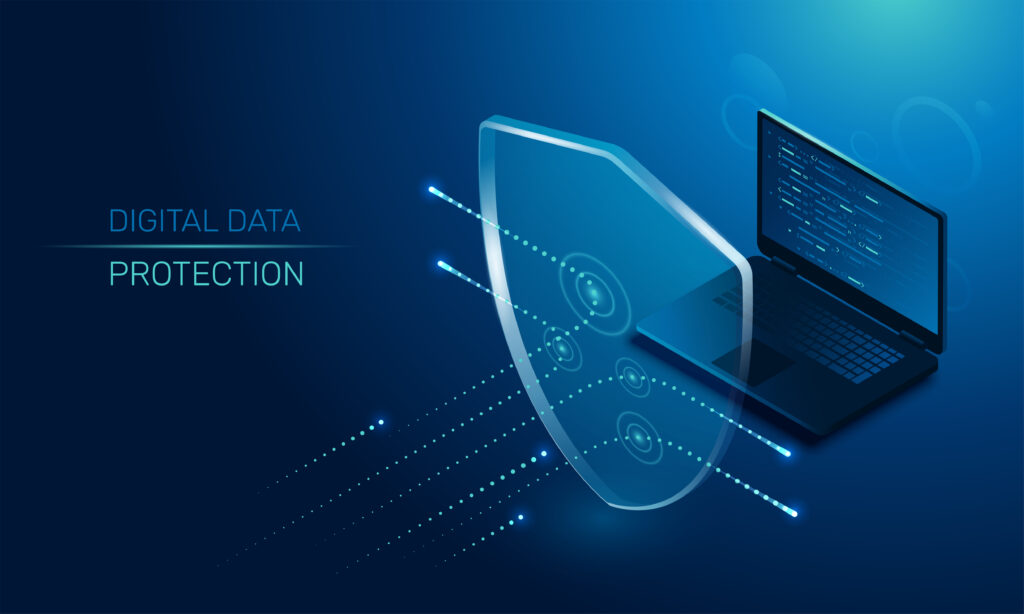
When it comes to Cybersecurity, make sure you’re not giving your data away.
Securing Your Digital Fort: The Imperative of Cybersecurity
 A data breach in the United States costs over twice the global average at around $9.48M. However, it has been determined that the Healthcare industry specifically gets hit the hardest with cyber threats, averaging around $10.10M – the highest data breach cost of any industry. Cybersecurity is a crucial part of protecting your companies’ data, but what does it really mean and why is it important?
A data breach in the United States costs over twice the global average at around $9.48M. However, it has been determined that the Healthcare industry specifically gets hit the hardest with cyber threats, averaging around $10.10M – the highest data breach cost of any industry. Cybersecurity is a crucial part of protecting your companies’ data, but what does it really mean and why is it important?
Cybersecurity is the practice of protecting your business’ critical computer systems, networks, devices, and all your sensitive data information from any unauthorized access. It is the many added-on safeguards that prevent any unwanted sources access to your data. Cyber criminals tend to go after personally identifiable information; this information can include names, birthdays, addresses, bank accounts, social security cards. Generally, the sensitive data that has been taken by cyber criminals is then sold for anyone who wishes to use your information for themselves – or held for ransom until the demand for payment has been met.
But how do these attackers acquire your information in the first place?
With the ever-changing world of technology, it is easier than ever to access information. Any time you input sensitive information onto a machine – be it through a phone, a computer, an iPad, or even your patient chart at a physician’s office, the information is then stored either on a network or the Cloud. Hopefully your network and Cloud access should be protected by many layers of security from your committed IT service provider. Think of those protection layers as a safe that contains all your most precious belongings. If the lock (security) is weak enough, it can be broken by these cyber criminals, putting your information at risk.
So what steps are taken to ensure that your business’ information is properly safe guarded from cyber-attacks? A strong cybersecurity plan should have multiple layers of protection to defend against cyber threats – this includes any attempt to change or destroy data, extort money, or disrupt normal business operations.
Consider these items when talking to your IT service provider about what is included in your cybersecurity plan:
- Cloud Security: encrypted cloud data that supports business requirements & customer privacy.
- End-User Education: Build security awareness amongst your organization – delete suspicious emails, don’t click on any suspicious links, avoid using unknown devices, etc.
- Disaster Recovery: An in-depth plan on how to respond to unplanned events, such as a natural disaster, power outages, cybersecurity incidents, etc.
- Network Security: Security that protects your computer network from intruders.

With the number of cyberattacks on the rise, here are some types of threats to look out for:
- Phishing: Phishing is the practice of sending fraudulent emails that resemble an email sent via a reputable company. The goal of these emails is to get you to click on a suspicious link and reveal any sensitive information. Some examples of this can be seen as asking for an update on your credit card number, asking you to update your password or anything else regarding your login information. If you see an email asking for any information, contact your IT service provider and provide them with all the information about the email – report it and delete. Do not give any of your information away over email.
- Malware: Malware is a term for malevolent programs which sole purpose is to gain unauthorized access or cause damage to a computer. These are also known as viruses, worms, spyware, or trojans. These can often be found from free downloads on the internet or by clicking on suspicious links.
- Ransomware: Ransomware is a type of virus or “malware” that completely locks down your entire system and/or threatens to make personal data public if a ransom is not paid. And, with the national average costing companies over $9.44M annually…don’t let this be you!

We understand that cybercrimes can be scary, but there are steps to avoid these attacks:
- Use a Secure Password Manager: This is a simple step; however, it is the most often overlooked. Passwords should be complex, which are longer than 12-16 characters long with a variety of different characters, numbers, and capitalization. Using common and easy to guess passwords makes it all too easy for hackers to break into your accounts. A password manager allows you to create unique randomly generated complex passwords for each account you use while you only must remember one master password. Also, don’t write your passwords down on a sticky note and keep it on your desk – you never know who could walk by and input that information into the system!
- Use Multiple Verification Processes: MFA (multi-factor authentication) creates another barrier that protects your assets. These combinations can include additional passwords, pins, email or text codes, face ID, and more.
- Update Software: Make sure that you’re keeping your company software up to date. Installing the newest software ensures that any bugs or patches are fixed, leaving less room for any hackers to take advantage of software vulnerabilities. Many systems allow for automated updates – if this is available to you, you should enable it. This includes any antivirus software.
- Install a Firewall: This is really what it sounds like! Firewalls help prevent attacks by blocking the malicious traffic before it even enters your computer system.
but you shouldn’t let it impact your business more than necessary! Consider asking your IT support what they provide in your cybersecurity plan and start the conversation about your IT infrastructure. If you don’t currently have a committed IT service provider, we strongly encourage you to find one that best suits your business needs. If you’re not sure where to start, feel free to reach out to one of our DTC IT Experts today. We would be more than happy to help answer any questions you may have about your businesses or practice’s IT infrastructure and get you headed in the right direction. You can reach us at 410-877-3625 or send us an email to [email protected].
Fortify Your Digital Fortress: Safeguard your data with cybersecurity excellence!
Contributed by DTC Staff
Related Articles:
